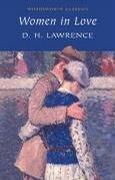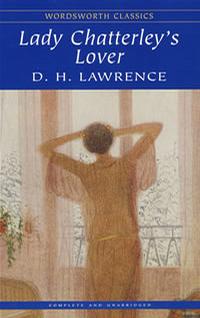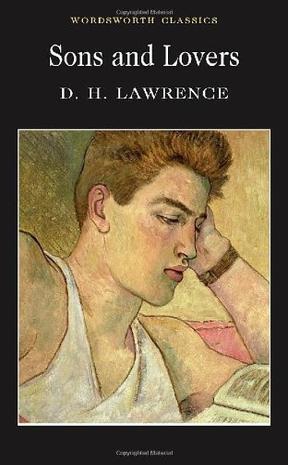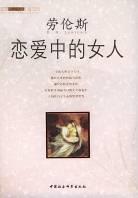Sons and Lovers
D. H. Lawrence
《儿子与情人(Sons and Lovers)》是劳伦斯以他的童年和青少年时代生活为蓝本而写成的一部成名作。小说主人公保罗的父母莫瑞尔夫妇在一次舞会上一见钟情,缔结婚姻。但莫瑞尔是矿工,而莫瑞尔太太出身中产阶级。两人的生活理念截然不同,妻子面对丈夫的浑浑噩噩,深感希望破灭。对丈夫的失望、不满和怨恨使莫瑞尔太太把自己的感情和希望都倾注到儿子身上。她先是寄希望于长子威廉,然而长子早逝。她又寄希望于次子保罗,希望他能够出人头地,实现她的理想。她爱儿子,鼓励他成名成家,跻身于上流社会;她又从精神上控制儿子,使他不能钟情于别的女人。这使得保罗在以后的感情问题上迷茫、困惑、无所适从。和女友米莉安的交往使年轻的保罗经历了精神痛苦的过程。然而和他的母亲一样,米莉安也试图从精神上占有保罗,使保罗感到窒息。后来他们分手了。保罗身边还有一个与丈夫分居的名叫克拉拉的女人。保罗从她那里得到了肉体上的满足。不过最终克拉拉结束了和保罗的感情生活,回到丈夫身边。最后莫瑞尔太太病逝,保罗和米莉安也未能重归于好。他依旧孑然一人,四处漂流,继续着他精神上的挣扎。
The Wordsworth Classics covers a huge list of beloved works of literature in English and translations. This growing series is rigorously updated, with scholarly introductions and notes added to new titles.
This semi-autobiographical novel explores the emotional conflicts through the protagonist, Paul Morel, and the suffocating relationships with a demanding mother and two very different lovers. It is a Freudian exploration of love and possessiveness.
Amazon.com
Sons and Lovers was the first modern portrayal of a phenomenon that later, thanks to Freud, became easily recognizable as the Oedipus complex. Never was a son more indentured to his mother's love and full of hatred for his father than Paul Morel, D.H. Lawrence's young protagonist. Never, that is, except perhaps Lawrence himself. In his 1913 novel he grappled with the discordant loves that haunted him all his life--for his spiritual childhood sweetheart, here called Miriam, and for his mother, whom he transformed into Mrs. Morel. It is, by Lawrence's own account, a book aimed at depicting this woman's grasp: "as her sons grow up she selects them as lovers--first the eldest, then the second. These sons are urged into life by their reciprocal love of their mother--urged on and on. But when they come to manhood, they can't love, because their mother is the strongest power in their lives."
Of course, Mrs. Morel takes neither of her two elder sons (the first of whom dies early, which further intensifies her grip on Paul) as a literal lover, but nonetheless her psychological snare is immense. She loathes Paul's Miriam from the start, understanding that the girl's deep love of her son will oust her: "She's not like an ordinary woman, who can leave me my share in him. She wants to absorb him." Meanwhile, Paul plays his part with equal fervor, incapable of committing himself in either direction: "Why did his mother sit at home and suffer?... And why did he hate Miriam, and feel so cruel towards her, at the thought of his mother. If Miriam caused his mother suffering, then he hated her--and he easily hated her." Soon thereafter he even confesses to his mother: "I really don't love her. I talk to her, but I want to come home to you."
The result of all this is that Paul throws Miriam over for a married suffragette, Clara Dawes, who fulfills the sexual component of his ascent to manhood but leaves him, as ever, without a complete relationship to challenge his love for his mother. As Paul voyages from the working-class mining world to the spheres of commerce and art (he has fair success as a painter), he accepts that his own achievements must be equally his mother's. "There was so much to come out of him. Life for her was rich with promise. She was to see herself fulfilled... All his work was hers."
The cycles of Paul's relationships with these three women are terrifying at times, and Lawrence does nothing to dim their intensity. Nor does he shirk in his vivid, sensuous descriptions of the landscape that offers up its blossoms and beasts and "shimmeriness" to Paul's sensitive spirit. Sons and Lovers lays fully bare the souls of men and earth. Few books tell such whole, complicated truths about the permutations of love as resolutely without resolution. It's nothing short of searing to be brushed by humanity in this manner.
--Melanie Re
From Kirkus Reviews
When Sons and Lovers was first seen by its reading public in 1913, its publishers had in fact, out of caution and timidity, shortened Lawrence's originally submitted version by about ten percent--cuts that are restored in this new "uncensored and uncut" edition. Complexity of characterization, intensity of characters' confrontations, and sexual frankness are now, say the publishers, as the author intended them. Example: "He could smell her faint perfume" returns to its original, "He could smell her faint natural perfume, and it drove him wild with hunger."
The Merriam-Webster Encyclopedia of Literature
Semiautobiographical novel by D.H. Lawrence, published in 1913. His first mature novel, it is a psychological study of the familial and love relationships of a working-class English family. The novel revolves around Paul Morel, a sensitive young artist whose love for his mother, Gertrude, overshadows his romances with two women: Miriam Leivers, his repressed, religious girlfriend, and Clara Dawes, an experienced, independent married woman. Unable to watch his mother die slowly of cancer, Paul kills her with morphine. Despite losing her and rejecting both Miriam and Clara, Paul harbors hope for the future.
From AudioFile
Lawrence's first major novel is unstintingly, passionately autobiographical. Set in a Nottinghamshire mining town, it concerns the high-minded wife of a brutal miner who puts all hopes into her artistic son, Paul. Copley brings the workingclass milieu to life. His north country accent enhances the author's regional "sound," which may not be apparent on the page to American readers, but which is a prominent feature of the book's aesthetic. By shaving off a bit too much of the color, the abridgment reinforces the novel's starkness. Therefore, one should hear this recording before, not instead of, reading the full work. Y.R.
Book Dimension :
length: (cm)19.8 width:(cm)12.6
点击链接进入中文版:
儿子与情人(全译本)



